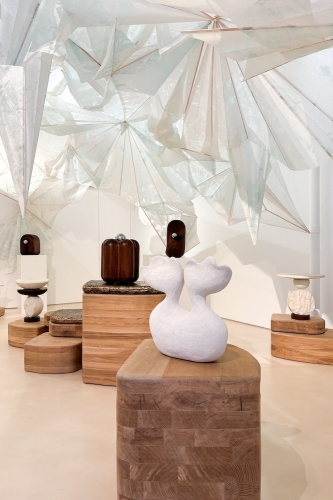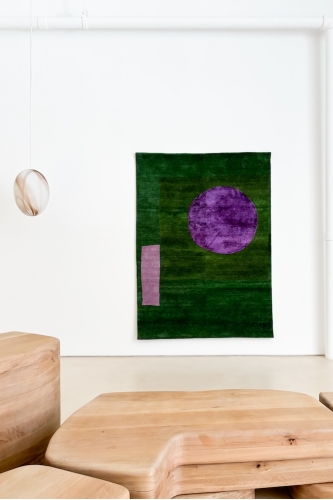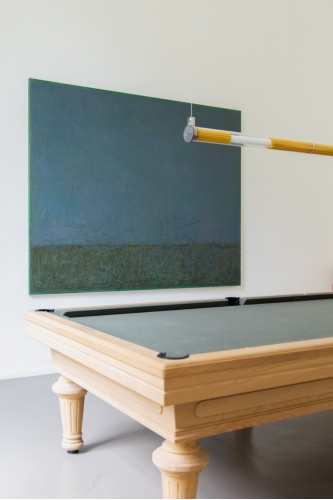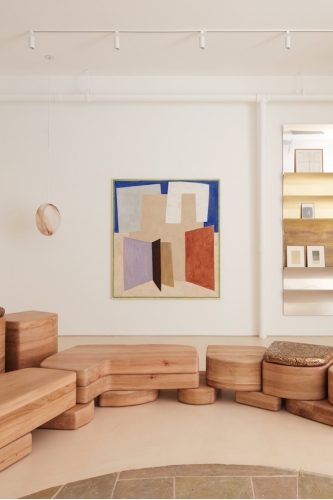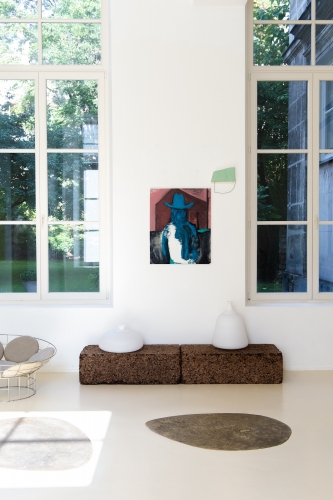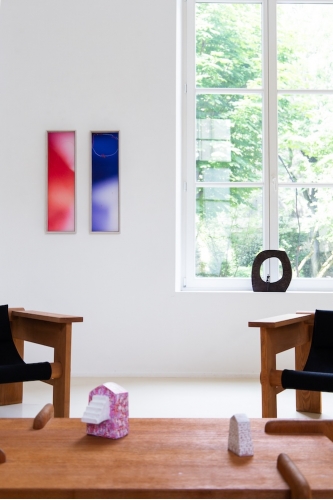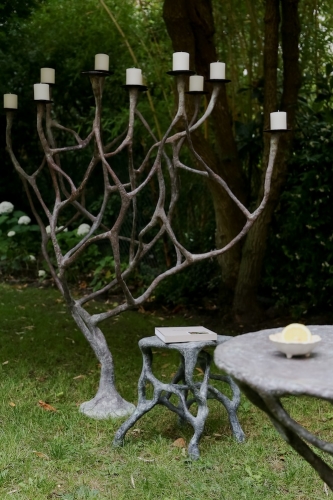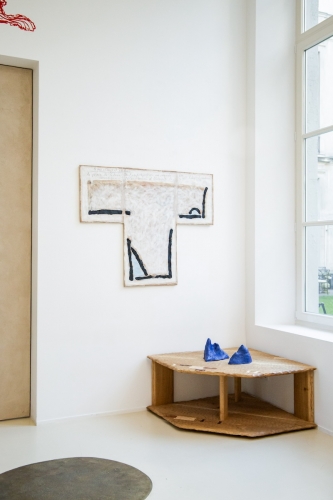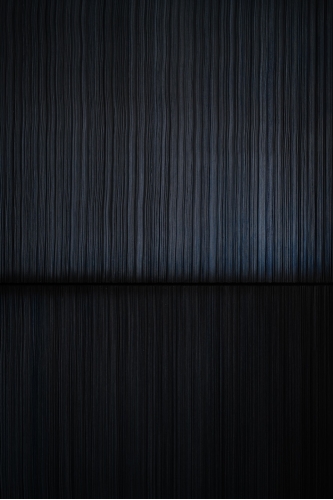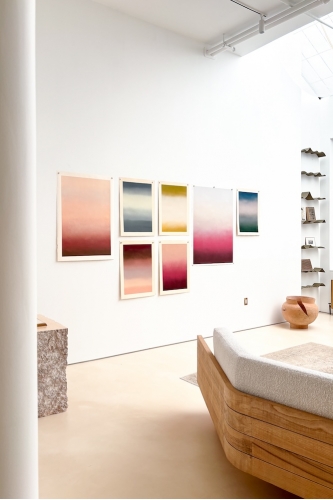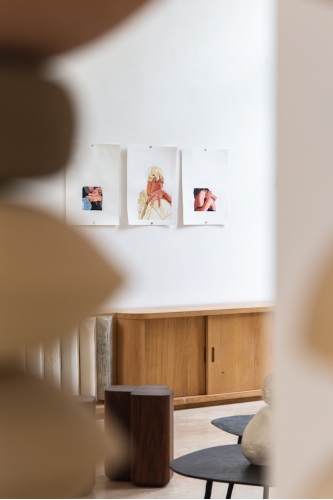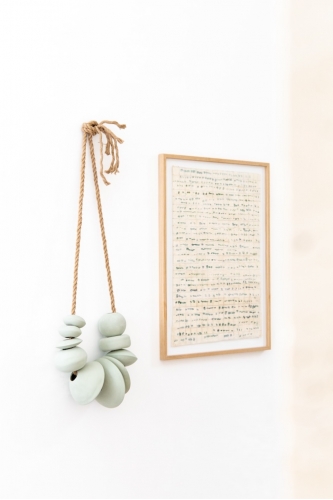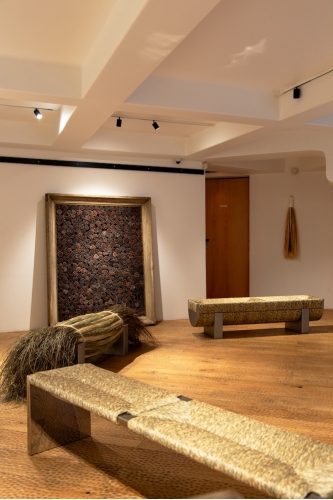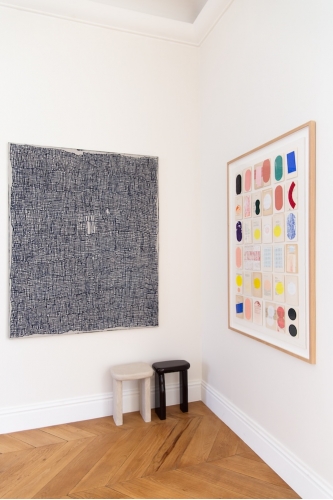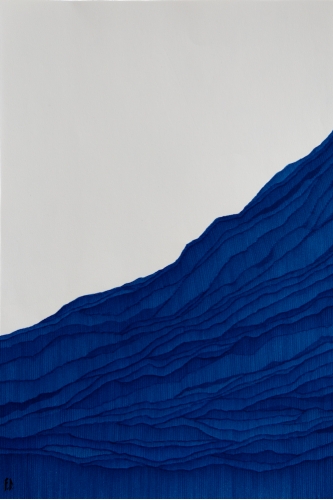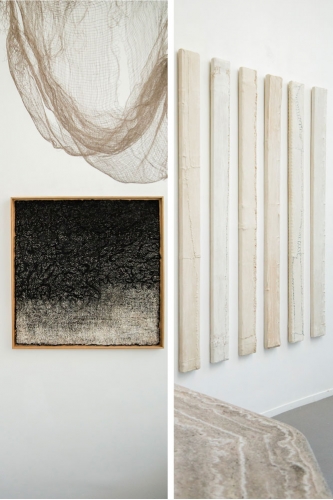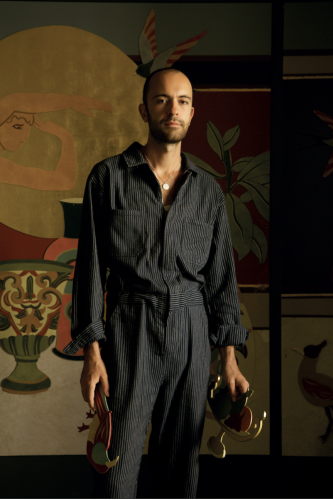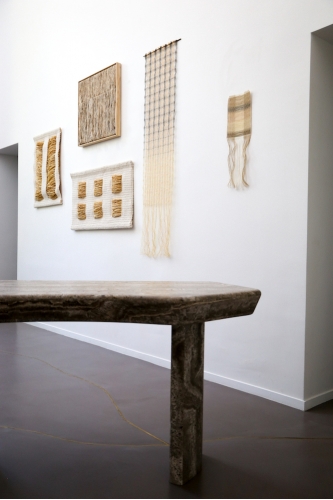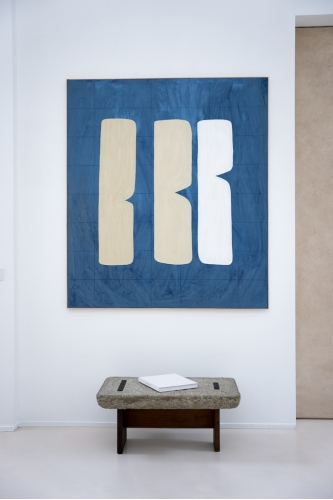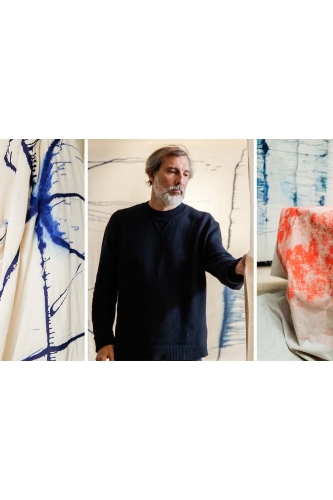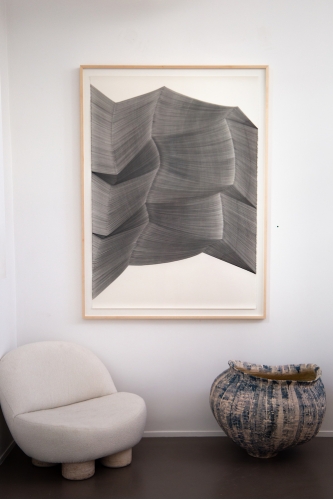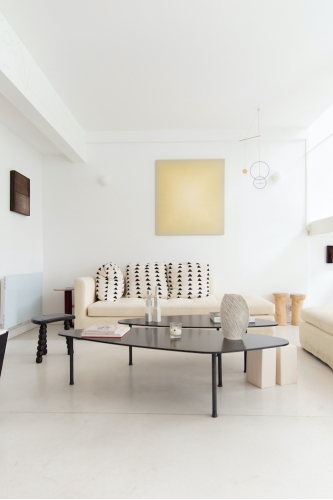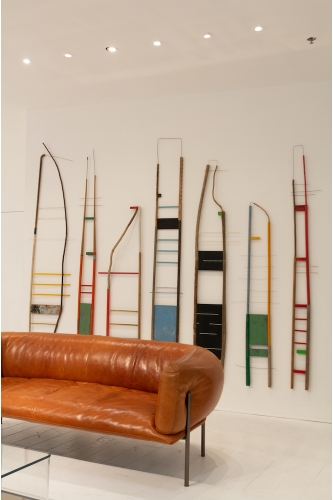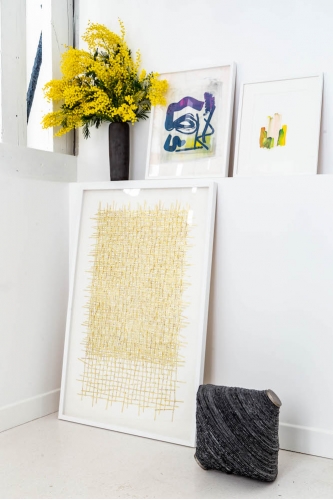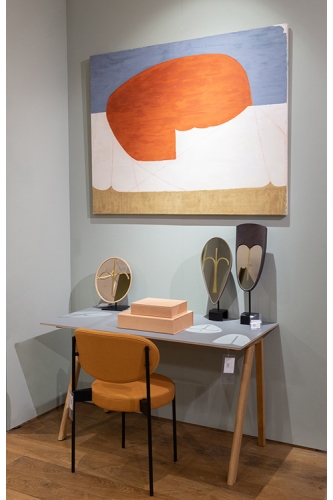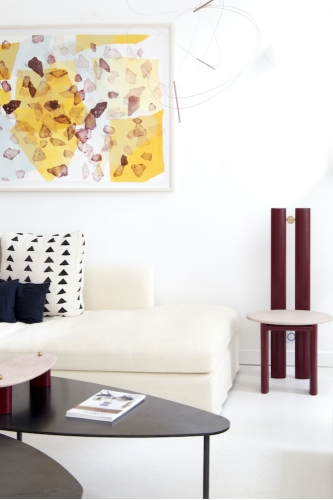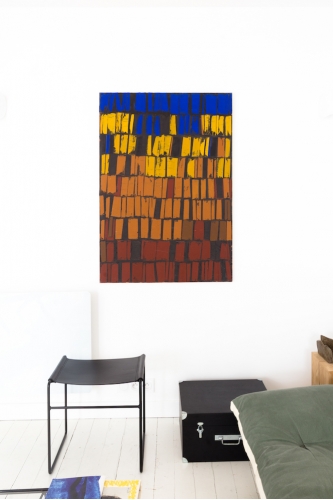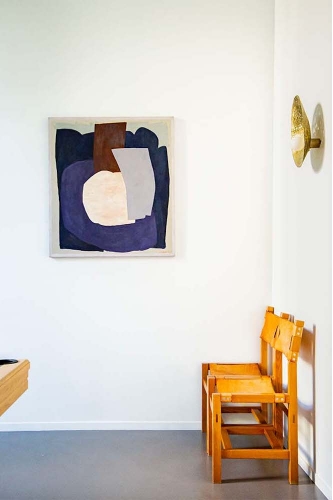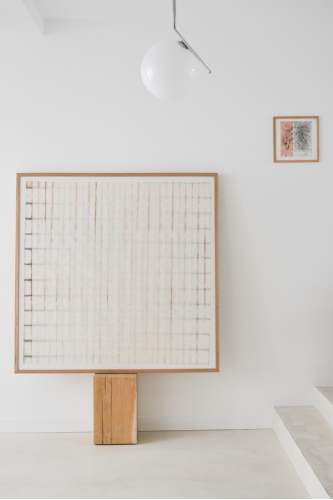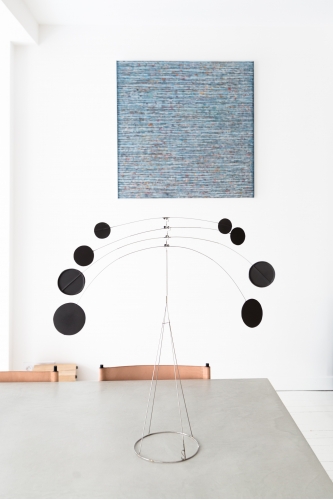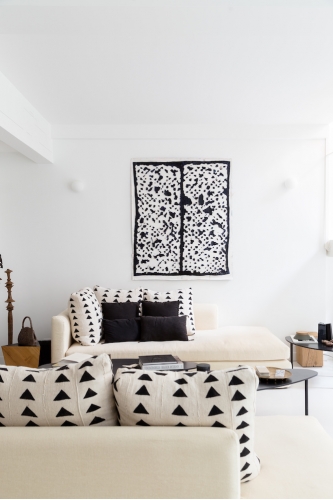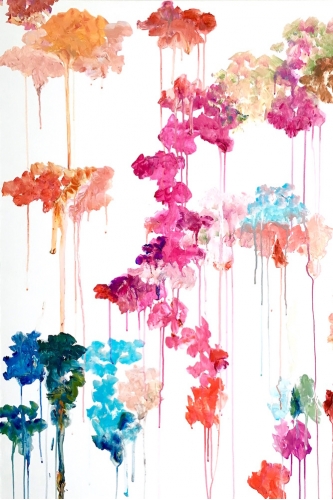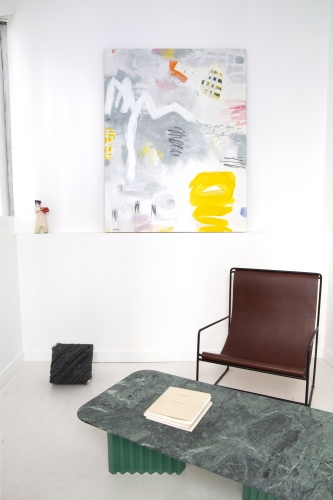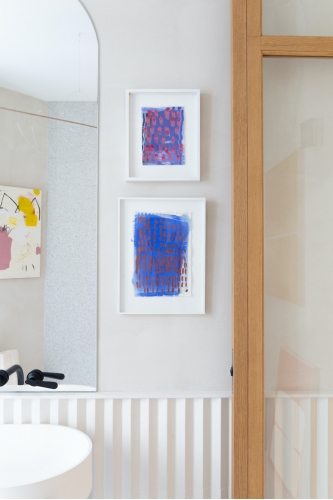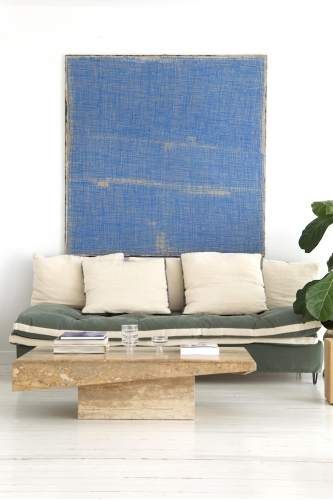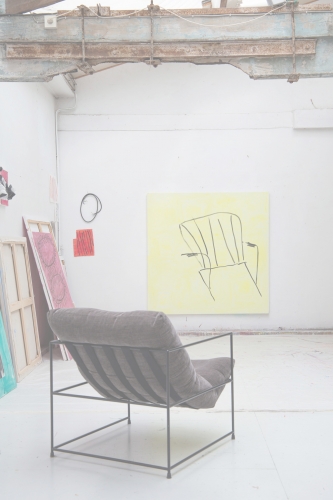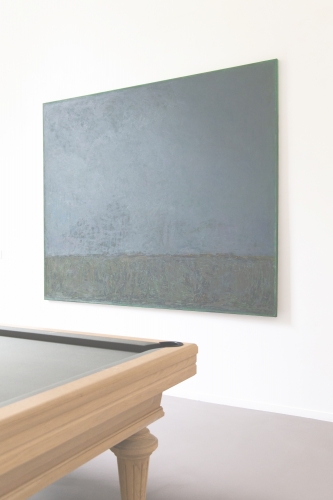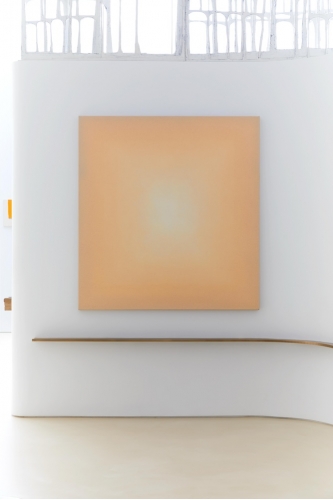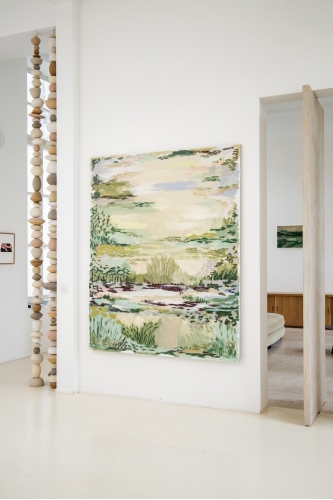exhibitions
see more
PAST EXHIBITIONS

D'instinct
Dominique Mercadal & Clément Mancini
January 2023
Dominique Mercadal
"Time does not pass but layers itself," says Dominique Mercadal, whose glazed stoneware, layered strata she streaks or stamps, softens everything. She works them in series and on slabs, a sort of template or sewing pattern, likely a nod to her early textile creations. Everywhere, graphic motifs saturate the surface, which undulates and takes on familiar shapes: cloud, tree, wave... The "false solids" of Dominique Mercadal deceive the eye, which believes it sees in these "pixelated" volumes—sand- or soot-colored—the pretty things nature produces. Consider her solitary sheep, dotted with spots, seemingly escaped from a Seurat painting, or her rounded mountains, furrowed like the Cairn of Gavrinis, hybrids of a plowed field and a Zen garden. The climate, seemingly benign, is in crisis, and catastrophe looms: tsunami, charred trunk, mudslide... Whether in dreams or reality, Dominique Mercadal encounters threatened landscapes. Her large, dry basins bear witness: their source has run dry, and on the stone, no water remains where cascades once flowed, only wrinkles. For every void, there is fullness in these chiaroscuro pieces, "built up" slowly, by chance or accident, as their material is unpredictable. Flattened or mounted on walls, they are landscapes of contrasts.
Virginie Huet
Clément Mancini
For a long time, Clément Mancini answered the call of the wall. The echo between his past graffiti and his current canvases is clear, as they too are painted instinctively, with swift gestures. His agile hand draws signs devoid of meaning on black or cream backgrounds—neutral planes full of traces—without a sketch. Free from any constraint, these illegible writings represent nothing: they are forms unto themselves, akin to the direct expressions of American Abstract Expressionists—Robert Motherwell, Willem de Kooning, Joan Mitchell, Helen Frankenthaler, Clyfford Still. In turn, Mancini takes action and colors vast open fields with a reduced palette, ranging from brown to green, rust to pink. Azure blue lines, like exposed veins, suddenly electrify the whole, which otherwise oscillates between darkness and pale fire. From afar, the surface appears smooth. Up close, the ghosts of origin emerge—mistakes Mancini does not disown. On the contrary, they frame his work: planes are improvised in isolated sections demarcated by tape, then erased, covered, and erased again, wholly or partially. These random cuts into acrylic layers create angles, a sense of depth, and an effect of perspective. Chance and layering already guided his initial plaster casts and rust rubbings, other material experiments evoking parietal impressions. These, even more stripped down, bear the same bite of time.
Virginie Huet




